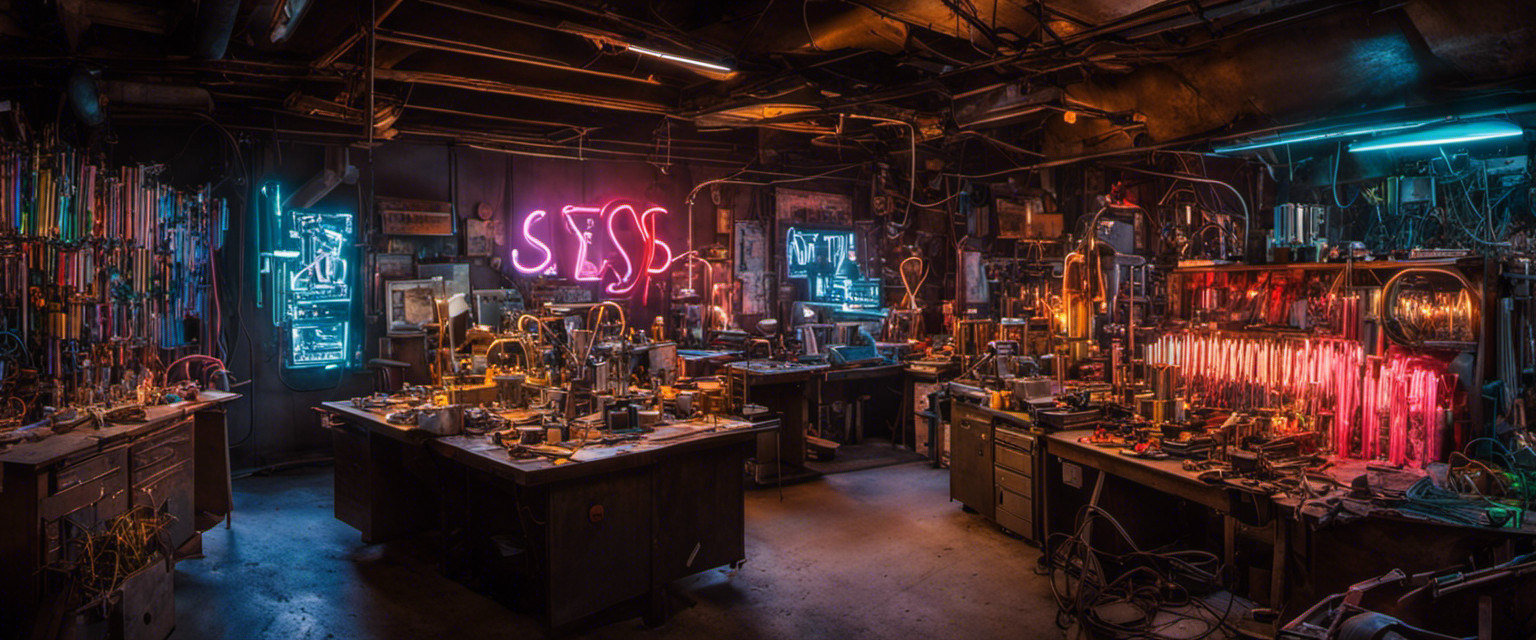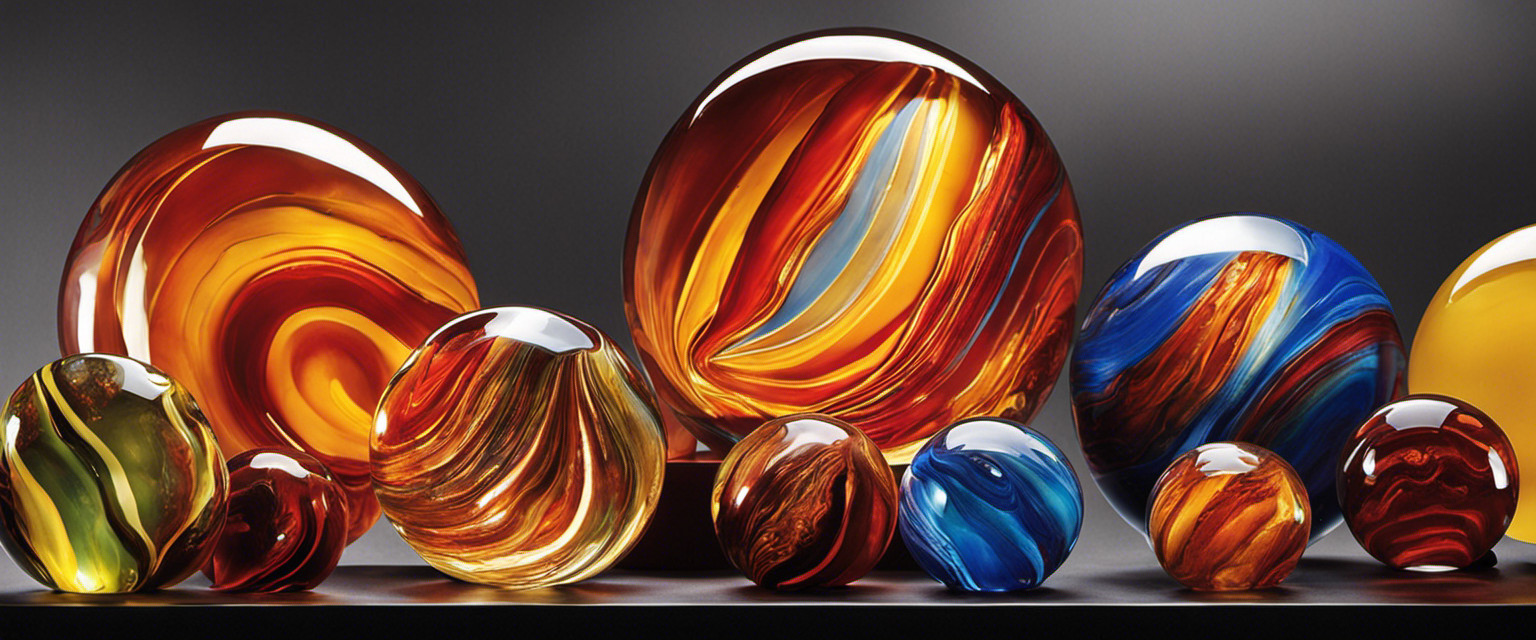Neon sign making, a craft steeped in history and craftsmanship, unveils a world of seemingly trivial information that holds intrinsic value. Like hidden gems scattered throughout the vast landscape of knowledge, useless facts about this art form provide a unique glimpse into its intricacies.
In this article, we delve into the historical backdrop of neon sign making, explore its complex manufacturing process, offer practical tips for aspiring artisans, and conclude with some final thoughts on the subject.
Embark on this journey as we unravel the enigmatic realm of neon sign creation.
Neon Sign Making History
The discussion on the origins of neon signs and the evolution of neon signage is a fascinating topic that delves into the rich history of this iconic form of advertising.
The origins of neon signs can be traced back to the early 20th century, when French chemist Georges Claude developed the first practical method for producing neon light.
Over time, these luminous tubes have undergone significant advancements in design, technology, and application, resulting in a diverse range of neon signages seen today.
Origins of Neon Signs
Origins of neon signs can be traced back to the discovery of the element neon in 1898 by Sir William Ramsay and Morris W. Travers. Neon sign making techniques have evolved over time, incorporating advancements in glassblowing and electrode technology.
Throughout history, numerous famous neon signs have captured public attention. Examples include the iconic ‚Welcome to Las Vegas‘ sign and the flashing lights of Times Square in New York City. These signs continue to showcase the artistic possibilities and visual impact of neon signage.
Evolution of Neon Signage
Evolution of neon signage has been shaped by advancements in glassblowing techniques and electrode technology. The neon sign industry trends have seen a significant shift with the advent of LED technology, which has had a profound impact on traditional neon signs. LEDs offer energy efficiency, durability, and flexibility in design, leading to their widespread adoption.
However, despite this competition, traditional neon signs continue to hold their own unique charm.
In the following section, we will explore the main explanation of the neon sign making process.
Main Explanation of Neon Sign Making Process
One fundamental step in the process of creating neon signs involves bending glass tubes into desired shapes. Neon sign bending requires expertise in glass blowing techniques, where the glass is heated and manipulated to achieve specific forms.
Skilled artisans utilize various tools, such as blowtorches and molds, to shape the heated glass accurately. This precise technique ensures that the final product meets the design requirements and delivers aesthetically pleasing results for individuals seeking freedom of expression through neon signage.
Tips for Neon Sign Making Process
Practical recommendations can enhance the efficiency and accuracy of the glass bending process in creating custom shapes for neon signs. To achieve optimal results, consider the following tips:
- Use precise measurements and templates to ensure accurate shape reproduction.
- Utilize a variety of heat sources, such as ribbon burners or cross fires, to evenly distribute heat during the bending process.
- Employ proper safety precautions, including wearing protective eyewear and gloves, to minimize potential hazards.
Final Thoughts
In conclusion, adherence to the aforementioned recommendations can significantly contribute to the successful creation and installation of visually appealing and safe neon signs.
By avoiding common mistakes such as inadequate planning, improper tube bending, and subpar electrical work, one can ensure a high-quality end product.
Additionally, seeking creative inspiration from various sources such as art movements, typography, and popular culture can lead to unique and captivating designs.
Ultimately, attention to detail and a commitment to excellence are key in the neon sign making process.
Frequently Asked Questions
What Are the Different Types of Gases Used in Neon Sign Making?
The different types of gases used in neon sign making include argon and mercury. Argon is commonly used to create a blue or purple light, while mercury is utilized to produce a white light.
Can Neon Signs Be Used Outdoors?
The use of neon signs outdoors has both pros and cons. Factors that should be considered when choosing a location for an outdoor neon sign include weather conditions, visibility, and potential damage from vandalism or natural elements.
How Long Does It Take to Make a Neon Sign?
The time required for making a neon sign is influenced by several factors, such as the complexity of the design, the skill level of the craftsman, and the availability of materials. Common mistakes to avoid include improper bending techniques and inadequate gas filling.
Are There Any Safety Precautions to Consider When Making Neon Signs?
Safety precautions during neon sign making include wearing protective gear, such as gloves and goggles, to prevent injury from broken glass or chemicals. Common mistakes to avoid involve mishandling electrical components and improper ventilation when working with hazardous materials.
Can Neon Signs Be Repaired if They Get Damaged?
The cost of repairing neon signs depends on the extent of the damage and the complexity of the repair. Common causes of neon sign damage include electrical issues, physical impact, and exposure to harsh weather conditions.






